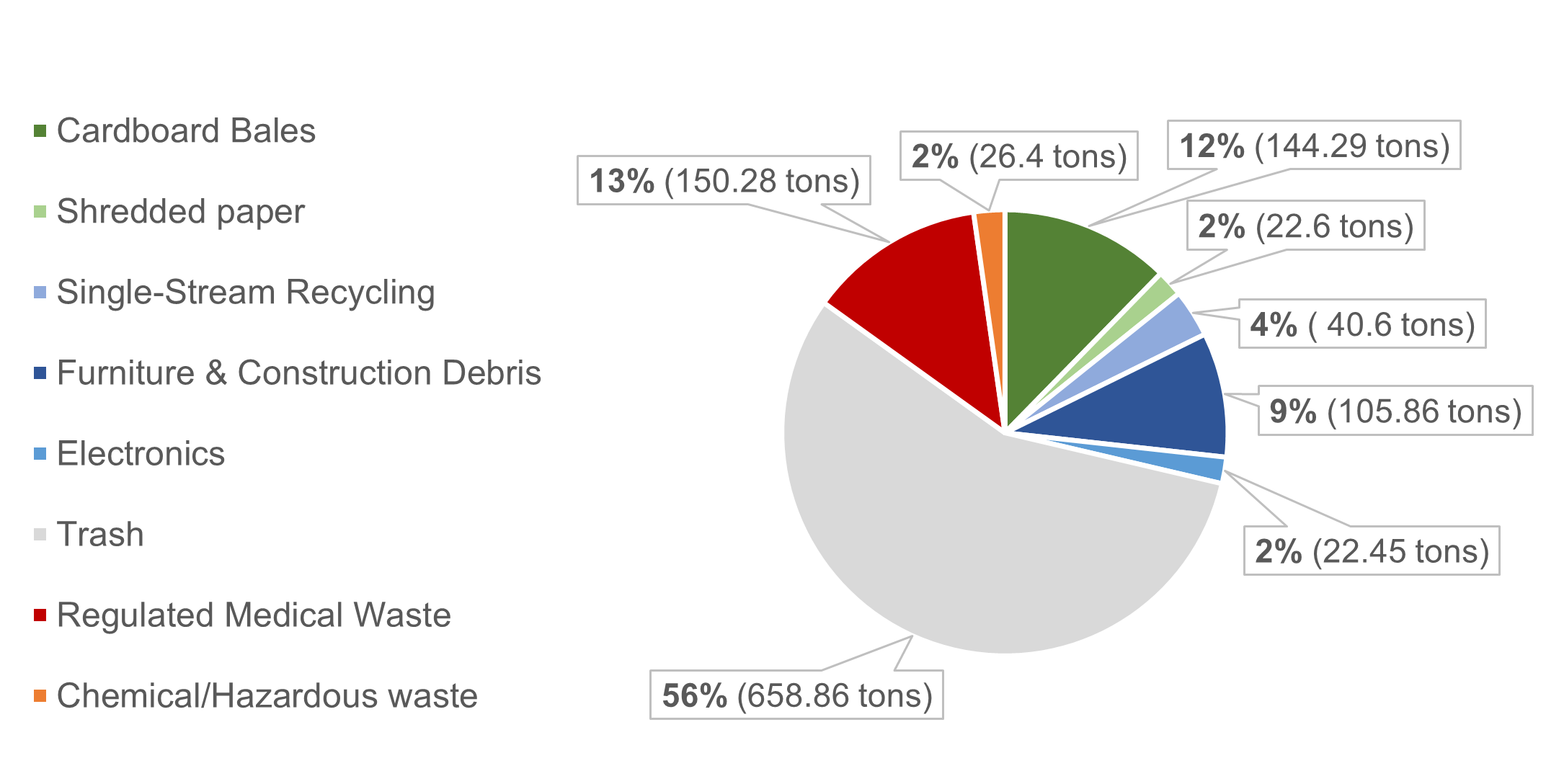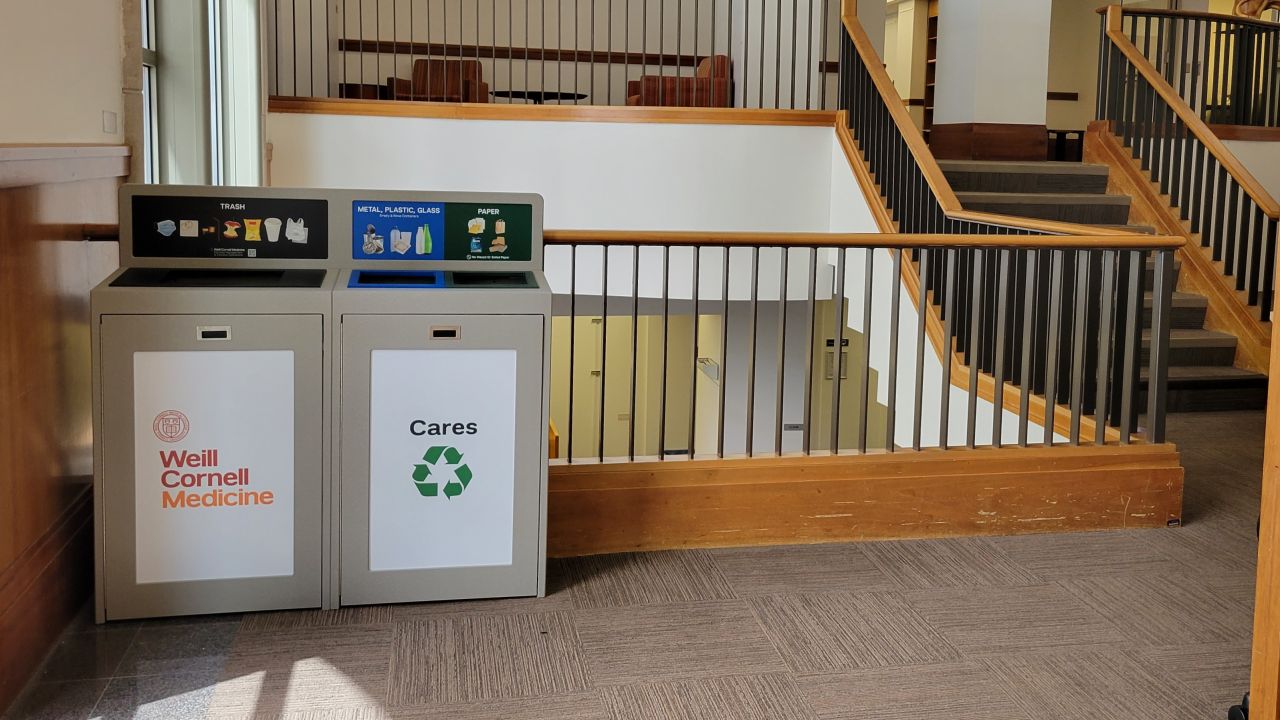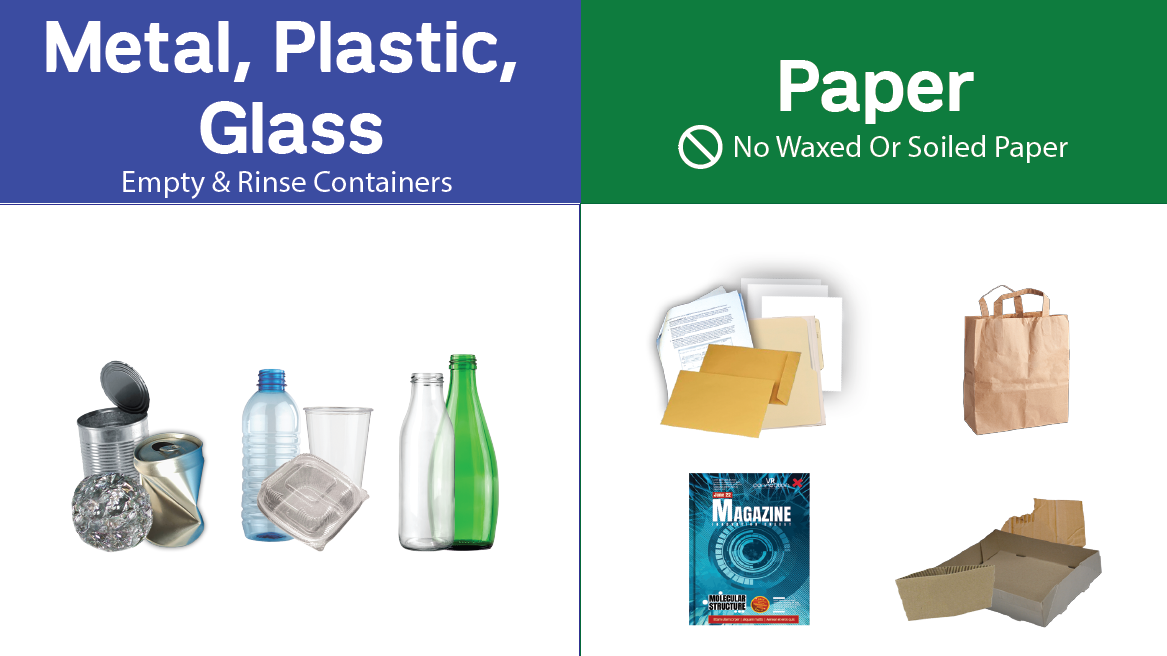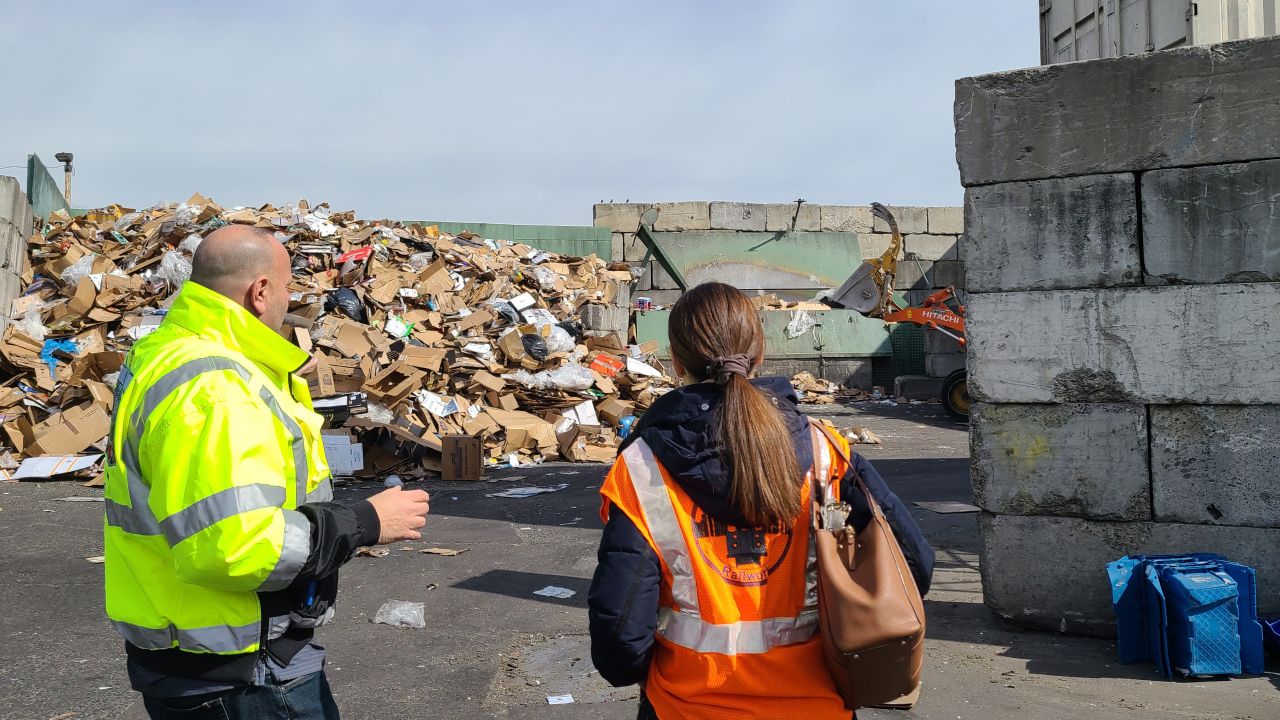Diesel trucks carry Manhattan's garbage 7.8 million miles every year. That's the equivalent of driving more than 312 times around the Earth!
Waste management is an important part of WCM sustainability efforts. Reducing the amount of trash sent to landfills can significantly reduce greenhouse gases and pollution.
At Weill Cornell Medicine, the Housekeeping team oversees the movement of our trash and recycling. Trash from the main campus is collected and consolidated in a compactor before being picked up by a hauler. WCM’s hauler provides a single-stream recycling system. This means that all recycling streams are combined together. The separation into different waste streams (paper, plastic, metal, glass) happens later at a sorting facility. Only corrugated cardboard (such as thick delivery boxes) is collected separately. However, keeping paper separated from plastic, glass, and metal helps preserve it and increase paper recycling quality. Therefore, the Office of Energy & Sustainability encourages WCM students and staff to separate paper from the rest of their recycling when possible.
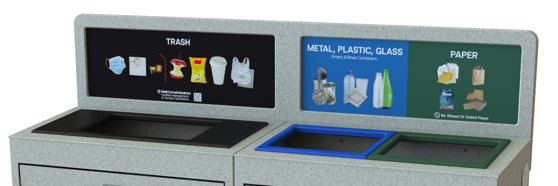
WCM Waste Streams (2022) - Main Campus
Diversion Rate
In 2022, of the 1171.3 tons of waste generated, 26.4% was diverted from landfills. Above the national average of 24%.
Buildings serviced by WCM’s hauler (single-stream recycling):
| Main campus | Offsite locations |
|---|---|
| 1300 York and Whitney Pavilion | 53 Beekman St |
| Belfer Research Building | 240 E 59th St |
| Weill Greenberg Center | 1163-67 York Ave |
| S and SI Buildings | 2315 Broadway |
| Olin Hall | 232 West 80th St |
| Lasdon House (Floors 2-5) | |
| Oxford Building |
Trash and recycling from residencial buildings and some leased areas are collected by other haulers via the building manager or by the Department of Sanitation. Usually, these areas must separate paper from the rest of the recycling, and the recycling streams are collected separately by the hauler.
Buildings with source-separated recycling include:
| Lasdon House (Floors 6 and above) and other housing |
| Feil Research Building |
| 77th St Housing Building |
| Center for Integrative Medicine |
| LA Building |
| MR Building |


